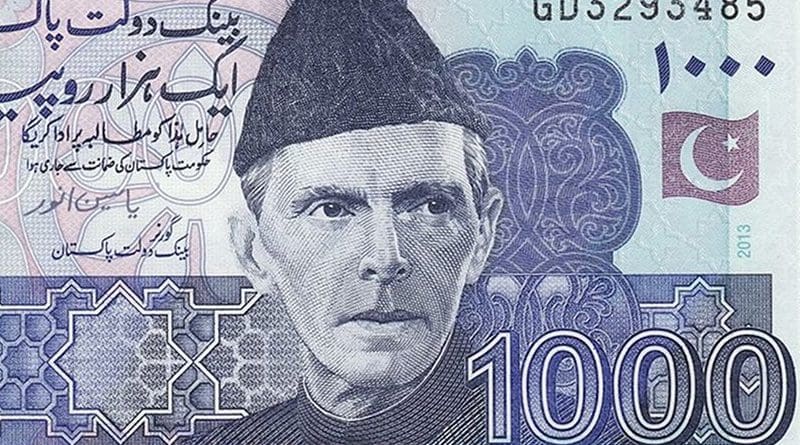Pakistan’s Vicious Cycle Of Debt – OpEd
By Ujala Siddiq
In 1958, the precarious financial condition of Pakistan required borrowing from various international financial institutions, including the International Monetary Fund (IMF). General Ayyub signed an agreement to secure a Special Drawing Right (SDR) of US $25 million.
However, the money was never withdrawn. In 1965 and 1968, two programmes from the IMF were pursued with a withdrawal of SDR US $112 million. This was the first time when Pakistan became a beneficiary of the IMF. On May 18, 1972, Zulfikar Ali Bhutto again reached out to the IMF. The same pattern of borrowing continued in 1974 and 1977. During these three reach-outs, Pakistan withdrew SDR of US $314 million against an SDR of US $330 million.
After that, General Zia ul Haq kept the ball rolling, and Pakistan borrowed SDR of US $2.187 billion and utilised only US $1.079 Billion. Then during the tenures of during the regime of Benazir and Nawaz (1988-1997), Pakistan went to IMF eight times and withdrew an SDR of US $1.64 billion. In 1999, General Pervez Musharraf again went to IMF and availed an SDR of US $1.33 billion in 9 years, but with low-interest rates. In 2008, PPP government went for the biggest IMF bailout package, securing an SDR of US $4.94 billion. Then in 2013, PML-N government kept the tradition alive and borrowed SDR $4.399 billion from the IMF ── the second-biggest loan in the history of Pakistan. In 2018, Pakistan received US $259.5 million dollars from the IMF and by January 2023, these liabilities had reached US $1,266.5 million dollars.
Pakistan has become accustomed to going through a cycle of debt which has become unsustainable. The IMF and other international financial institutions always set limits, guidelines, structural adjustments, and bailout conditions for the debtor. Along with the defined set of guidelines and limitations, the structural adjustments include climate change policies, promoting gender equality, democracy, and transparency. It also focuses on taxation and transparent use of the bailout package. Moreover, the conditions include austerity measures and privatisation drives which can lead to unemployment and high-interest rates, which can create economic stress for the non-affluent in society.
To get the full benefits from these packages, there is a need to follow and review the structural and policy amendments of the countries that have successfully come out of the debt cycle and have strengthened their economies, e.g., Egypt, Serbia, Iceland, etc. Egypt’s success story revolves around policy and structural amendments of three main components — monetary amendments, fiscal amendments, and structural amendments. To address the economic issues of shortage of foreign exchange and low reserves, the government introduced a market-determined exchange rate system. The fiscal amendments to control the high government deficit and public debt were the implementation of value-added tax (VAT), reducing food subsidies, and raising energy prices. The structural changes that the government made to control the low growth (2.5 percent) and high unemployment (12.7 percent) were the ratification of the investment law and the easy entry of foreign start-ups and businesses into the country.
By following the footprints of the countries who have successfully utilised the bailout packages and broken the cycle of chronic debt, Pakistan should not only immediately seek restoration of the IMF support package, but also take stringent measures to link them with economic restructuring and stimulus. The delaying tactics used to avoid the support plan for fear of taking tough economic decisions to prepare for elections has done more damage than good. Relief will not come immediately though, even in the best-case scenario. There must be a comprehensive policy plan to strengthen the economy of the country in the long term. The government should take concrete steps to try to rebuild confidence in the economy by displaying commitment to consistency in economic policies, as economic confidence and political stability are interwoven. Political stability and consistent, rational policies will improve the economic condition of the country.
The key component required to achieve a strong economy is to work on ensuring financial stability. Structural changes are also required in the banking sector to rebuild the ailing system. One of the critical interventions is to provide “targeted subsidies”, instead of giving board subsidies. The government should focus on subsidising the poorest segments of society and announce social welfare interventions, as the IMF has also recommended, withdrawing across-the-board subsidies that become ineffective due to their nature.
The above-mentioned measures are useful as short-run fixes only; for long-term benefits from the bailout packages, there is a need for institutional and public service reforms. Pakistan should focus on strengthening its institutions and should encourage private-sector-led growth as done by Egypt. It should modernise public services and the tax administration to improve efficiency and increase revenues that will reduce the debt burden. It is critical to implement structural reforms and transparency in the tax collection system. The state-owned enterprises also need reorganization. Although some enterprises have already been privatised, others need restructuring to become viable. Although the economic environment is improving gradually, there still is a need to work on transparency and regulation. The government should work on providing a conducive environment for start-ups and foreign businesses by allowing them easy entry, and other facilities specifically associated with the growth of the business like better roads and infrastructure, telecommunication networks, robust energy grid, and acceptable living standards. These actions will ultimately result in an improved and stable economic condition.
Ujala Siddiq is a researcher at the Centre for Aerospace and Security Studies (CASS), Lahore, Pakistan. She may be reached at [email protected]

